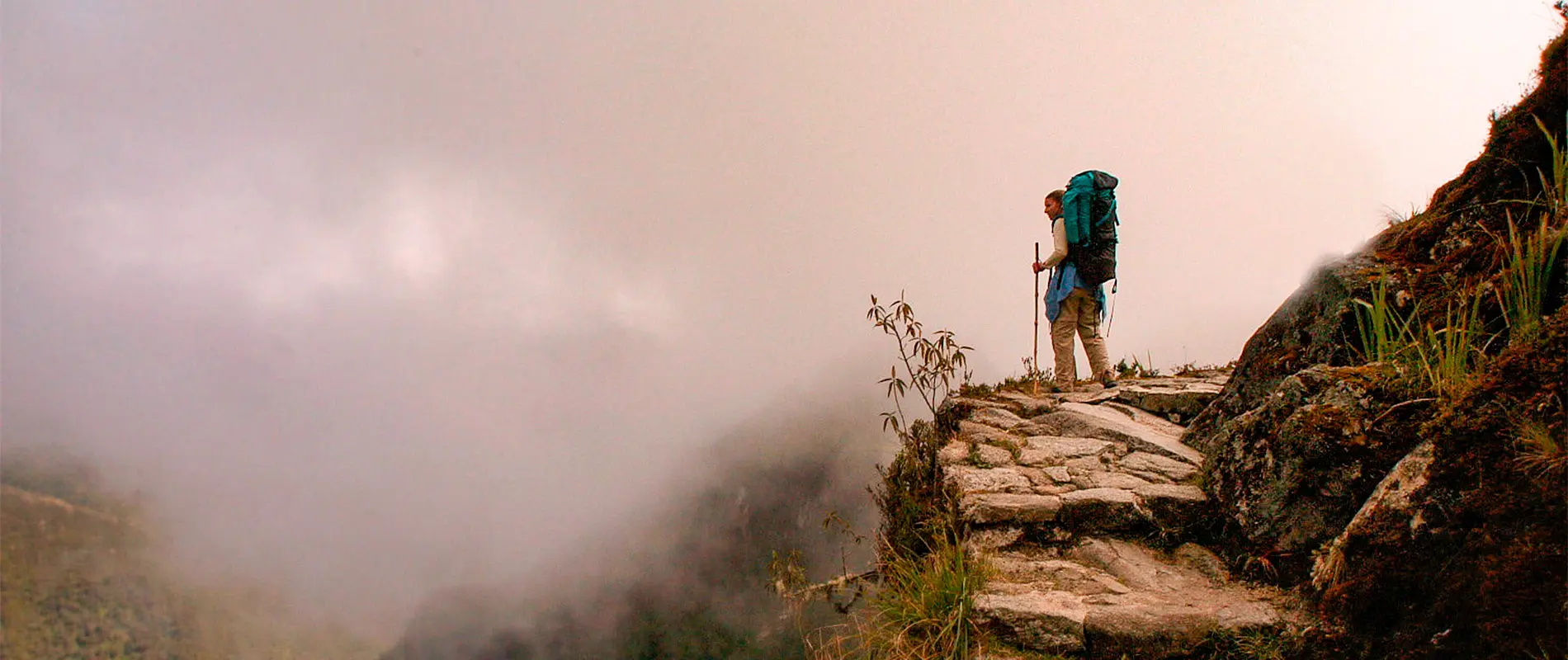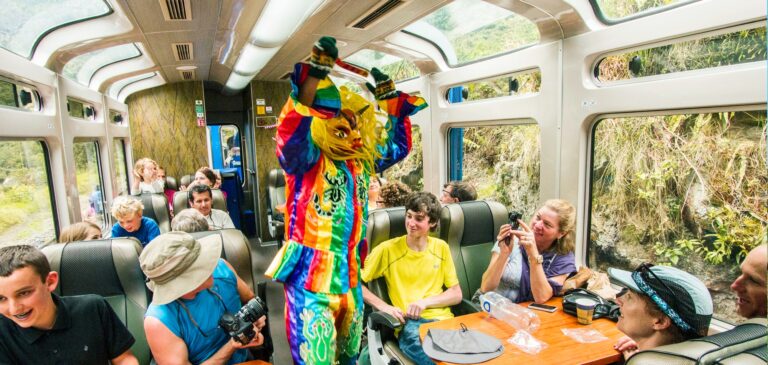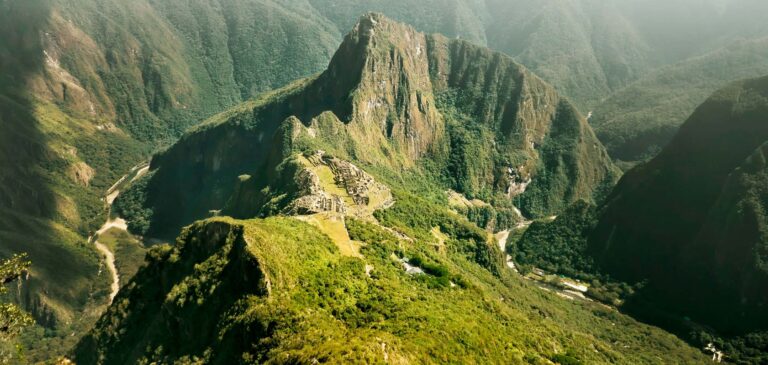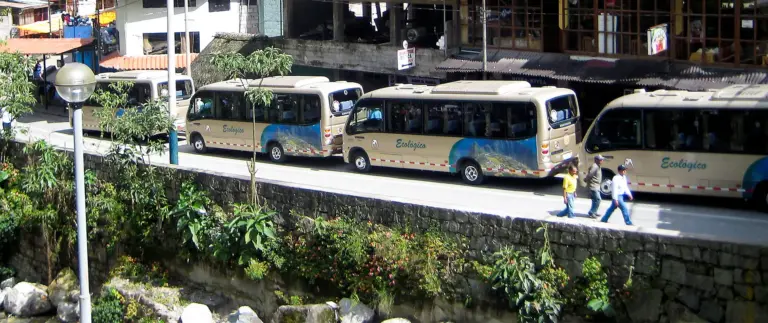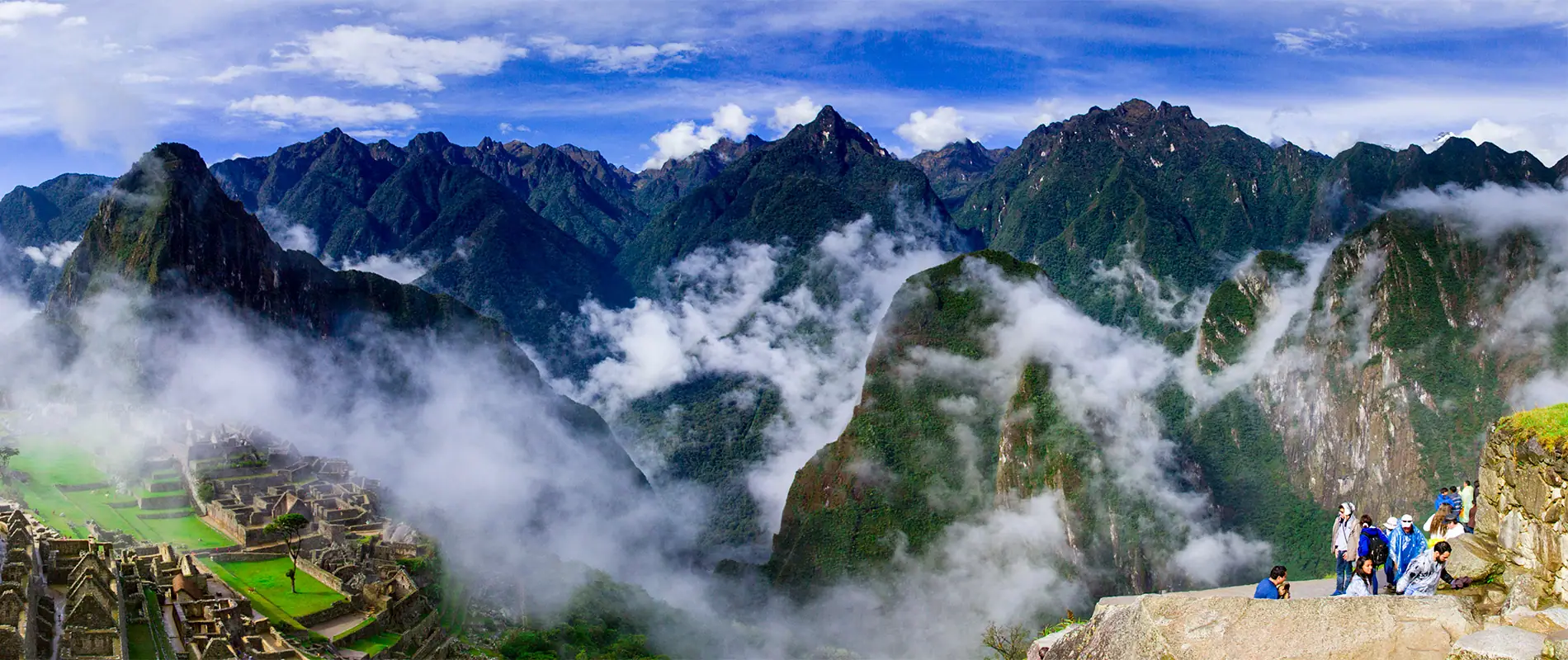
When Is The Best Time To Visit Machu Picchu?
When considering the right time to visit Machu Picchu one must first take into account the weather conditions. Machu Picchu is a subtropical highland climate located in the Cloud Forest of the Andean Mountains where the weather can change in an instant.
This region has two main seasons the dry season in winter, ranging from May to October, and the rainy season in summer, from November to April. The dry season is warm and dry during the day and cold at night, there is much more sun during this time so sunscreen is highly recommended. During the rainy season the weather is warm and wet in the day and mild in the night, with loads of mist covering the landscape. Join us as we go through the year month by month and weigh the pros and cons.
Dry Season In Machu Picchu
The dry season ranges from May to October and is the most picturesque time to visit Machu Picchu. During this time you are almost guaranteed a perfect sunny view at Machu Picchu.
The temperature during the day is dry and hot but, once the sun sets, the temperture drops significantly. This season, because of the great weather, is the busiest time of year with the most tourists visiting Machu Picchu. Be prepared to wait in lines for the bus, train and at nearly every part of the journey including inside Machu Picchu. Now lets break down the dry season month by month.
May
With the dry season setting in, May has a average rainfall of 23mm. The average temperature in May ranges from a high of 77°F (25°C) to a low of 51.8°F (11°C). Compared to the hottest month of the year, September, and the coldest month being July. The feeling during this time of year is warm to mildy hot during the day, and cool at night.
This month is a great time to visit Machu Picchu as the weather is nearly perfect everyday with little to no rain. Expect crowds during this month.
June
June is the driest month with an average of 17mm of rain and one of the busiest months of the year. The temperature varies drastically during this month from moderately hot in the day 25°C (77°F) to cold at night 9°C (48.2°F).
This is the real start of the tourist season as many countries start summer vacation in June. Expect huge crowds as this is one of the busiest months of the year.
July
July is in middle of the dry season but, the rain starts to pick up 22mm of rain. This is the coldest month of the year with temperatures dropping during the night and early morning. Average highs of 25°C (77°F) and lows of 9°C (48.2°F).
The crowds continue in full strength as there are many festivals this month in addition to Peruvian independence July 28th. Make sure to book everything months in advance as there will be very little accommodation to book.
August
During August the average rainfall is still low 22mm. August has similar temperatures to July, the average high of 25°C (77°F) and low of 10°C (50°F).
The busiest month of the year, this is when you will see the biggest crowds at Machu Picchu. Be prepared to wait in lines for transportation whether you’re taking a bus or train. Additionally there will be lines at the entry of Machu Picchu and at the view points. All treks are available but its recommended to take alternatives to the Inca Trail due to crowds.
September
September marks the beginning of the seasonal change in the region bringing more fog and rain 44m. This month is the warmest of the year, with highs averaging 26°C (78.8°F) and lows 11°C (51.8°F).
Being a transitionary month between the peak and off seasons, or a “shoulder month“, sunny clear skies and less crowds make September a perfect time to visit.
*September is the end of summer for the northern hemisphere resulting in less crowds when compared to the peak season of the months before.
October
October brings a further increase in rain 75mm and is your last guarantee of having prefect sunny views of the Incan citadel. The temperature in October is only slightly cooler than that of September having highs of 25°C (77°F) and lows of 11°C (51.8°F).
Being a shoulder month like September, October is a great time and is a highly recommended month if it works with your schedule. Summer having completely ended in the northern countries, the crowds at Machu Picchu start to disappear.
What to Bring During The Dry Season
It goes without saying that seasonal conditions change quickly. Make sure you are prepared and have everything you need to enjoy Machu Picchu to the fullest!
- Sunscreen and eye protection
- Water bottle/snacks
- Proper hiking gear such as boots and trekking poles
- Rain gear
- Camera
Rainy Season in Machu Picchu
The wet season brings a much needed increase in rain to the region, revitalizing the vegetation and adding renewed life to the landscape. During this time the surrounding mountains and hills are covered in a vibrant green. The lush green landscape, in combination with mist/rain and sunbreaks, makes for absolutely stunning views where rainbows contrast beautifully against the green background. The rainy season ranges from November to April and is during the low season. Machu Picchu and the touristic attractions in general are much less crowded this time of year. If you’re someone who likes to avoid the lines and crowds, this is the perfect season for you.
November
November is the official start of the rainy season ushering in more rain 86mm. Similar to the temperatures in October, November has average highs of 26°C (78.8°F) and a lows of 13°C (55.4°F).
An uncrowded month due to the rain and mist potentially obstructing views of the Incan Citadel, November is one of the best months for visiting if you want to beat the crowds.
December
Continuing the rain trend, December brings 121mm of rain to the region. The temperatures are starting to warm this time of year with an average high of 26°C (78.8°F) and a low of 13°C (55.4°F).
Being part of the low season in December you wont encounter big crowds this time of year.
January
Expect more rain during January, 138mm on average. The temperature averages during January are 24°C (75.2°F) on the high end and 13°C (55.4°F) on the low.
Like the other months in the rainy season January is calmer and has fewer tourists than the dry season.
February
The month with the most rain, February boasts a 151mm of rain on average. A warm and wet month, February has average temperatures reaching highs of 25°C (77°F) and lows of 13°C (55.4°F).
Because of the amount of rain, February is the least busy month, where we see on average, the least amount of tourists visiting Machu Picchu.
*Please note: The Inca trail to Machu Picchu is closed during this time of year for maintenance purposes. If the Inca Trail is a must for your trip DO NOT come during this month!
March
One of the wettest months of the year March has 141mm of rain on average. The temperature is similar to that of the previous month with average lows being a bit cooler, the average highs are 25°C (77°F) and
lows of 11°C (51.8°F).
*Please note: The Inca Trail reopens this month!
April
April is considerably drier than the previous months with averages of 62mm. The temperature is warm to moderately hot with average highs reaching 25°C (77°F) to lows of 12°C (53.6°F). This decrease in rainfall brings more tourists to Machu Picchu so be prepared for a bit more crowds.
What to Bring During The Rainy Season
- Insect repellant
- Complete set of raingear including waterproof boots and backpack cover
- Hiking boots with good tread and trekking poles if desired
- Water bottle/snacks
***It’s extremely crucial to have footwear with good treads and better yet non slip soles. Because of the amount of rain the trail will be slick and potentially dangerous!
Seasonal Pros and Cons
Choosing when to visit Machu Picchu can be a daunting task, its important to note that both seasons have their positives and negatives.
Dry Season Pros
- Consistent and favorable weather
- Various festivals and Peruvian independence day
- Less insects due to the dry weather
- Best trail conditions
- Perfect conditions for photography and views of Machu Picchu
Dry Season Cons
- Biggest crowds and longest lines
- Intense sun and high chance of sun damage
- Highest prices for accomodation, tours and travel
- Dry landscape which may result in dead vegetaion
Wet Season Pros
- Less tourism resulting in smaller crowds
- Reduced sun exposure
- Lush green vegatation
- Various festivals centered around rain and water
- Lowest prices for accomadation, tours, and transportation
Wet Season Cons
- Unpredictable trail conditions
- Inca trail is closed for maintenance in February
- Most insects and mosquitos
- Potentially obstructed views of Machu Picchu due to fog
- Possibility of landslides and travel delays
Cusco Region Festivals
Machu Picchu is nestled in the mountains of the Cusco region which is home to the cultural center of the county and the capital of the Inca society. The region’s rich cultural heritage is best experienced by attending one or more of the many festivals. When planning your trip its a good idea to consider the festivals.
Semana Santa
Semana santa, or “Holy Week” in English, takes place between the second half of March and the first week of April, the date varies from year to year. The festivities start during the last week of Lent and last until Easter Sunday. Semana Santa is one of the biggest religious holidays in Latin America. During this week Cusco explodes with all sorts of different activities. Music and dancing in the streets and parties that last all day and night, parades and demonstrations all over the city attract hordes of people.
Cruz Velacuy
A spiritual celebration of the Andean people during this festival devotees march throughout the streets of Cusco carrying crosses to mountain peaks hills and shrines. The festival takes place on May 3rd every year and marks the beginning of the festival season here in Cusco. If you visit during this week you will be fully immersed in the vibrant Cusco culture.
Corpus Christi
A Christian feast festival celebrated all over world it’s a very important holiday in Cusco. Gatherings are held in the main square where attendees carry large statues of saints and have enormous feasts. The festival, which lasts 3 days, is usually held in June but sometime starts at the end of May and is a dedication to the body and blood of Jesus Christ. With Andean elements incorporated into the festival including music, dance and typical Andean dishes this is a great opportunity to see the unique customs of the region.
Inti Raymi
June is Cusco’s anniversary month and is full of various different festivals. Inti Raymi, which translates to “Festival of the sun”, is on June 24th and is the most important holiday in Cusco. June 24th is the winter solstice here in Cusco and is the shortest day of the year. Traditionally the “Sapa Inca”, or Incan emperor, would gather his subjects and make offerings to Inti, the Incan sun god and patron of he Incan empire, in order to ensure the suns return every day. This is one of the best times of the year to visit Cusco due to the huge celebrations and ceremonies held.
Pachamama Raymi
A celebration and dedication to the Incan earth goddess, Pachamama Raymi, translates to “Festival of Mother Earth”. The festival is held during the first week of August but the most important day is the 1st of August. On the 1st, offerings are made by placing cooked food and beverages under the earth. It is believed that Pachamama is hungry and thirsty this time of year. These offerings are thought to bring bountiful harvests, good health, and maintain a good relationship with nature.
